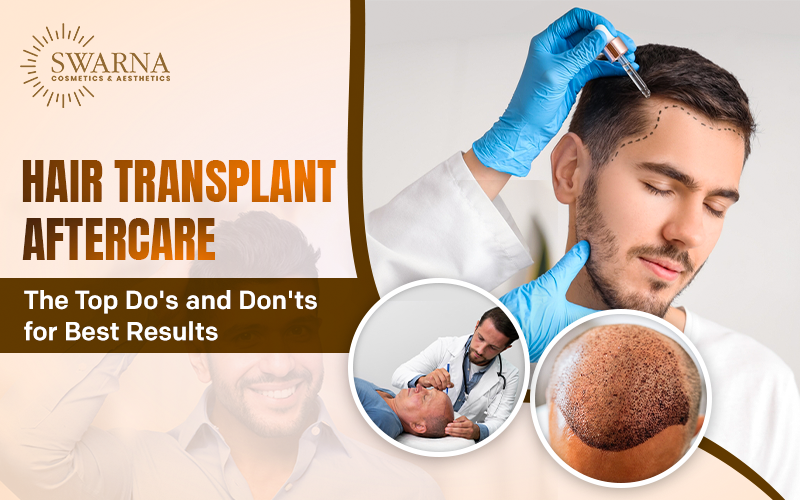
Hair Transplant Aftercare: The Top Do’s and Don’ts for Best Results
So, you’ve taken the plunge and gotten a hair transplant—congratulations! But here’s the thing: the procedure is only half the battle. Proper aftercare is the secret sauce to ensuring your new hair grows healthy and strong. If you’re wondering what you should and shouldn’t do after the surgery, you’ve come to the right place. Let’s dive into the essential do’s and don’ts for post-hair transplant care.
What to Expect After a Hair Transplant?
Immediate Post-Surgery Timeline
Right after the surgery, your scalp may feel tender, and you’ll likely notice some redness and swelling. These are normal reactions, so don’t freak out. Most people can return to light activities within a day or two, but your scalp needs time to heal.
Common Symptoms and Side Effects
You might experience minor itching, scabbing, or shedding of transplanted hair. This shedding, known as “shock loss,” is temporary and part of the healing process.
The Top Do’s for Hair Transplant Aftercare
Taking care of your scalp after a hair transplant is crucial to ensure proper healing and optimal results. Below are the essential things you should do after the procedure:
1. Do Follow Your Doctor’s Instructions
Your surgeon will provide you with a detailed aftercare plan, including how to clean your scalp, use medications, and protect the grafts. Follow these instructions closely, as they are tailored to your specific needs.
2. Do Keep Your Scalp Clean and Moisturized
Maintaining a clean scalp is key to preventing infections. Use the prescribed shampoo and cleaning solution gently, as instructed by your doctor. Moisturizing your scalp can also help reduce dryness and itching during the healing process.
3. Do Sleep in an Elevated Position
For the first few days after the surgery, sleep with your head elevated at a 45-degree angle using pillows or a recliner. This helps minimize swelling and protects the transplanted grafts from accidental rubbing.
4. Do Use Recommended Medications
Your doctor may prescribe pain relievers, antibiotics, or anti-inflammatory medications. Take these as directed to manage discomfort, reduce swelling, and prevent infections.
5. Do Stay Hydrated and Eat a Healthy Diet
Drinking plenty of water and consuming a balanced diet rich in vitamins, minerals, and proteins can speed up the healing process and promote healthy hair growth. Foods like leafy greens, nuts, eggs, and fish are particularly beneficial.
6. Do Protect Your Scalp from Sunlight
Direct sunlight can harm your sensitive scalp and newly transplanted grafts. Avoid sun exposure for at least a few weeks. If you must go outside, wear a loose-fitting hat or apply a gentle sunscreen recommended by your doctor.
7. Do Be Patient
Hair growth after a transplant takes time. The shedding phase, known as “shock loss,” is normal and temporary. New hair will start growing within a few months, and the final results will be visible after 6-12 months.
The Critical Don’ts for Hair Transplant Aftercare
Don’t Touch or Scratch Your Scalp
It may itch, but scratching can dislodge the grafts or cause infections. Resist the urge!
Don’t Wash Your Hair Too Soon
Wait for at least 48 hours before washing your hair. Even then, be extremely gentle.
Don’t Engage in Strenuous Activities
Avoid workouts, heavy lifting, or anything that causes excessive sweating for at least a week. Sweat can irritate your scalp and hinder healing.
Don’t Smoke or Drink Alcohol
Both can interfere with blood flow and slow down the healing process. It’s best to avoid them for at least a couple of weeks.
Don’t Wear Tight Hats or Helmets
These can put pressure on the grafts and disrupt their placement. Opt for loose-fitting headgear if needed.
Don’t Panic Over Shedding Hair
Shedding is normal! It’s part of the process before your new hair starts to grow.
Long-Term Care Tips for Optimal Results
Even months after your surgery, maintaining a healthy scalp is vital. Use gentle shampoos, avoid harsh chemicals, and keep your hair hydrated. Regular follow-ups with your doctor ensure everything is on track.
Signs to Watch For: When to Call Your Doctor
While mild discomfort, redness, and swelling are normal after a hair transplant, certain signs may indicate complications requiring medical attention. Watch for symptoms such as persistent pain, excessive swelling, pus or discharge from the scalp, or fever, as these could signal an infection. Unusual hair loss beyond the expected shedding phase or prolonged redness may also be cause for concern. If you experience any of these issues, it’s important to consult your surgeon promptly. For those seeking expert care from best hair doctor visit Swarna Cosmetics and Aesthetics Center, a leading hair clinic in Jaipur, provide excellent follow-up services and guidance to ensure a smooth recovery and optimal results.
Conclusion
In conclusion, successful hair transplant results are not just about the procedure itself but also about how well you care for your scalp afterward. By following the essential do’s—such as maintaining cleanliness, using prescribed medications, and protecting your scalp from sun exposure—and avoiding the critical don’ts, you ensure a smoother recovery and optimal hair growth. Remember, patience is key as results take time, but with proper aftercare, your new hair will flourish, giving you the confidence, you’ve been waiting for. Trust the process, and enjoy the journey to healthier, fuller hair.
FAQs About Hair Transplant Aftercare
1. How soon can I go back to work?
You can usually return to non-strenuous work within 2-3 days, but follow your doctor’s advice.
2. When will I see the final results?
It typically takes 6-12 months to see the full results of your transplant.
3. Can I use regular shampoos?
Stick to the shampoos recommended by your doctor for at least the first month.
4. Is hair shedding normal?
Yes, shedding is part of the healing process and usually occurs within the first few weeks.
5. What if I accidentally touch the grafts?
Don’t worry too much if it happens once or twice. Just avoid repeated touching and keep the area clean.